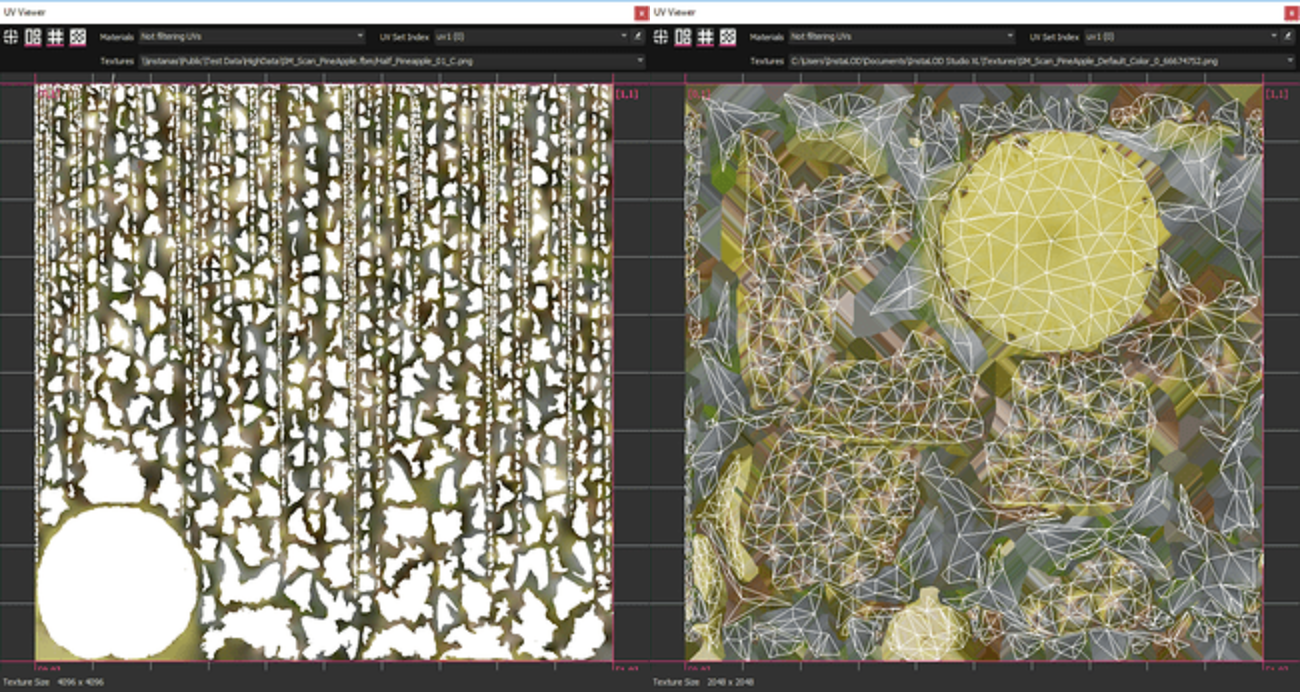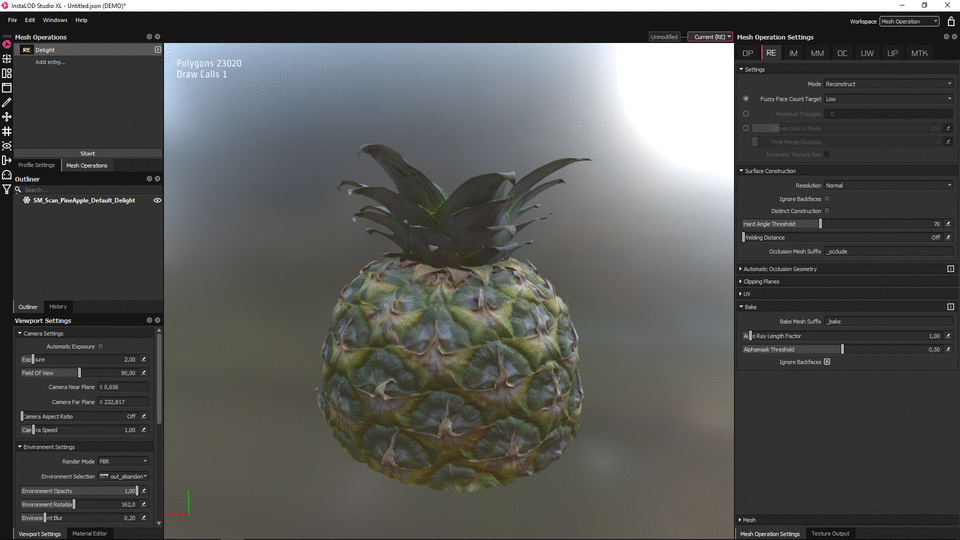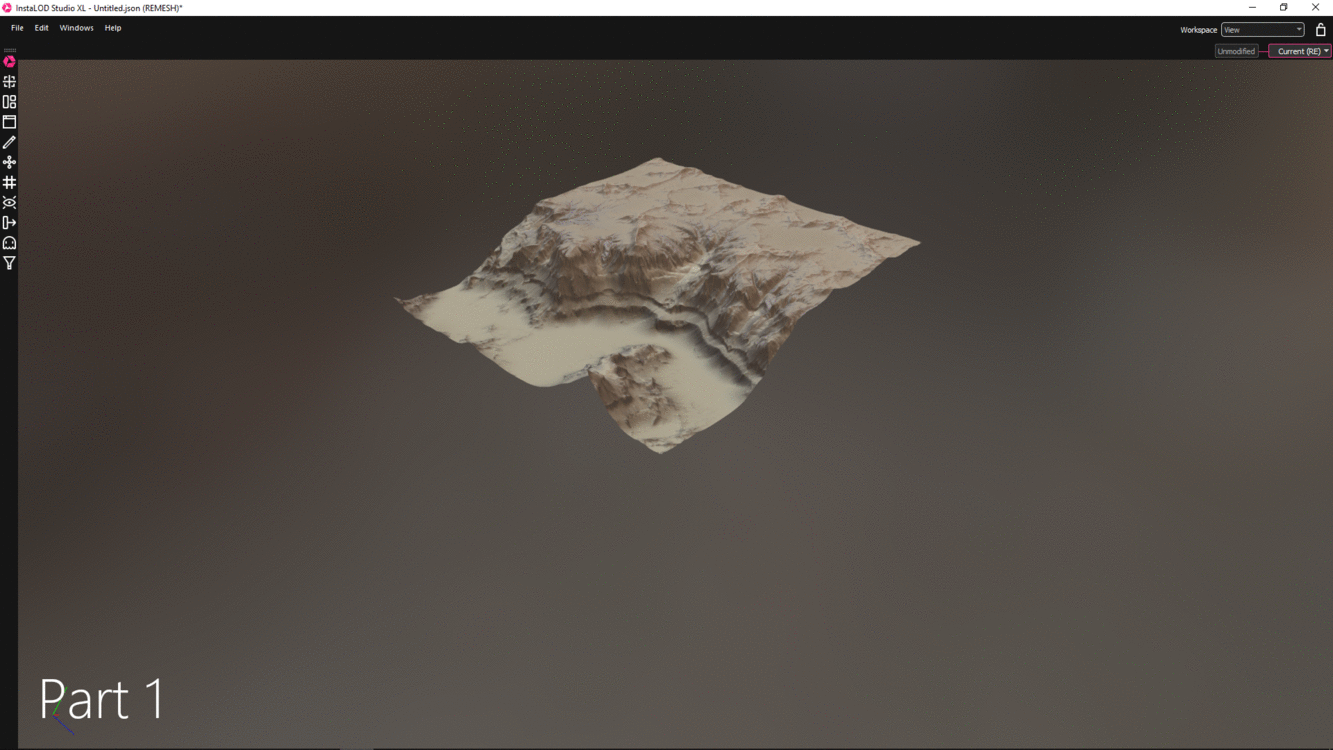Processing scan data is a difficult task in many aspects. While other optimizers and remeshers can crash at just 3-4mio polygons (where scan data typically starts), InstaLOD is able to batch-process hundreds of millions of polygons through InstaLOD Pipeline without needing high-end hardware.
¶ Remeshing Scan Data
https://www.youtube.com/watch?v=mMiob2hGCjI
Despite the polygonal count, common problems with scan data are also holes, non-manifold faces, inefficient UV layouts, massive textures, and many more. Therefore, remeshing is the ideal one-click solution that reconstructs the mesh fixes any broken geometry, creates a new efficient UV layout, and finally bakes and delights textures at the same time.
When dealing with millions of polygons, the target polycount to create a good result is typically not known. Therefore, using the Fuzzy Face Count Target (FFCT) is a great solution.
The Fuzzy Face Count Target lets InstaLOD figure out the ideal amount of faces to reconstruct the mesh. If it's set to Normal, InstaLOD creates a visually pleasing result for the PC/Console domain. Setting it to Lowest results in a mesh that is suited for mobile apps.
The FFCT is also the ideal solution for batching, as processing multiple files with various different polycounts and complexities, ends up with the ideal polycount for each.
The resolution determines what detail to model out. Depending on the resolution InstaLOD either preserves fine details or compensates for their loss by baking them instead (using a normal map or displacement map).

Original scan model with 6427 UV-shells Remeshed scan model with 125 UV-shells
¶ UV Unwrapping
With scan data, it is typical to have inefficient UV layouts where thousands of UV shells populate huge textures. With remeshing, InstaLOD doesn't only reconstruct the mesh but also creates new usable UVs which can be configured in the UV tab of the remesh settings.
The three different Unwrap Strategies allows for ideal unwraps of organic or hard surface objects. Using the Automatic Unwrap Strategy lets InstaLOD automatically determine the best strategy for the specified model.
The Stretch Importance adjusts the weighting of texture stretching. It can be set to Off if a model does not have textures to allow for better UV unwrapping. With the Stretch Importance set to higher values, InstaLOD prioritizes removing texture skewing during the UV unwrap.
The Gutter Size In Pixels increases the minimum pixel distance between each individual UV shell to prevent possible mipmap over bleed.
![]()
¶ Delighting
Photogrammetry data commonly contains unwanted shadows and highlights which are baked into the input texture. These baked shadows and highlights are typically not desired when relighting models in 3D environments; when the lights move but the shadows don't, the illusion breaks. With the Delight feature, these shadows and highlights are removed to create a flat texture so that the models can be relit in the 3D environment.

Comparison between original mesh with ambient shadows with 2mio Polys and remeshed delit mesh with 23k Polys
To render models in their albedo state in the viewport, change the Render Mode to Unlit.
¶ Large Environment Scans
When processing massive scans of environments, it is typical to have the environment split into multiple patches. Importing these huge data patches together into one scene to remesh them together can therefore become a difficult task for the hardware to keep up with.
Remeshing these patches individually can end up with unwanted results around the borders, as they will not align 100% correctly in many cases. To be able to load all patches into the viewport, they can be first optimized individually. The feature Lock Boundaries located in the optimizers Advanced Settings allows locking all boundary vertices to ensure perfect transitions between the patches. Once all parts are optimized, they can be imported and remeshed together into a single object.
